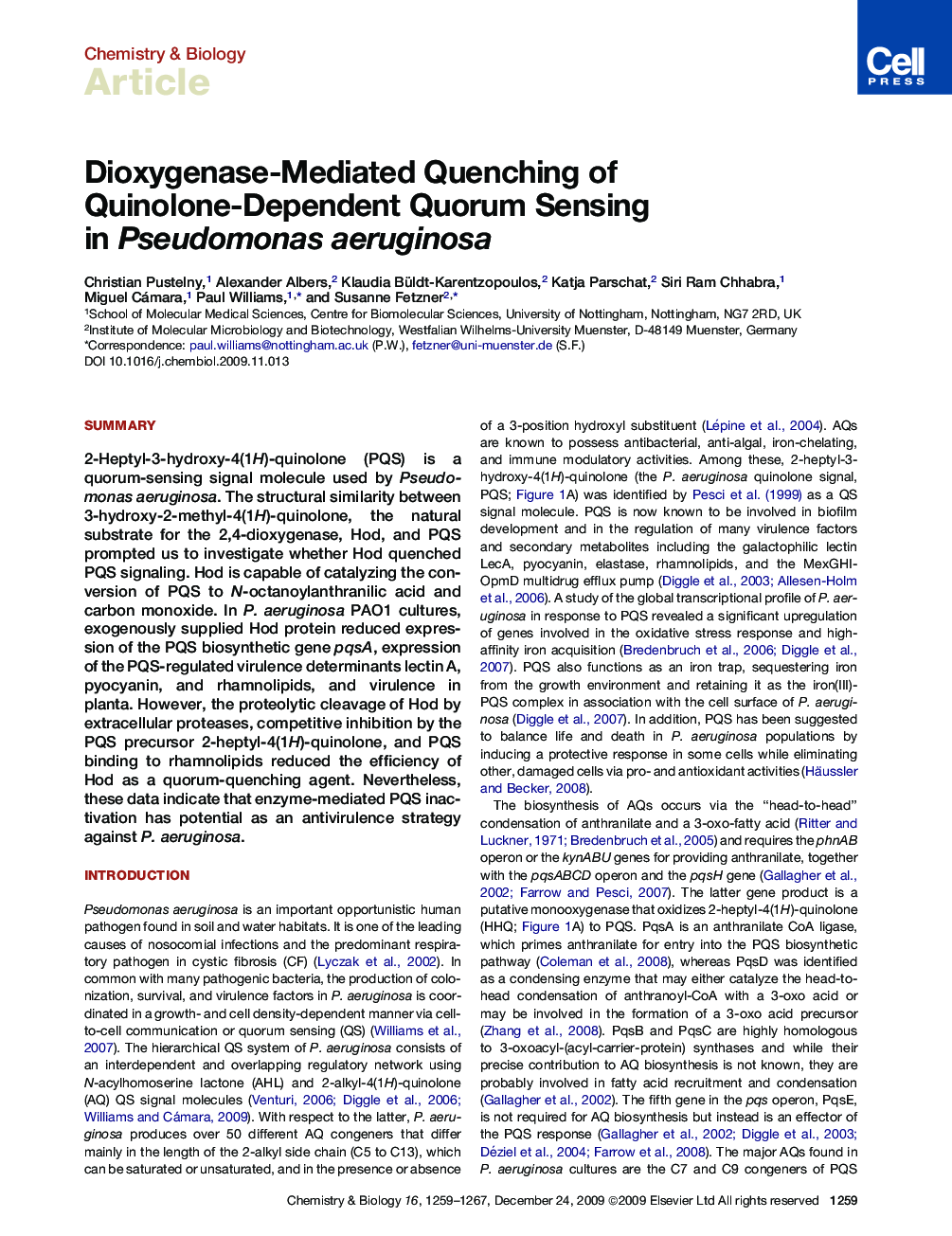| Article ID | Journal | Published Year | Pages | File Type |
|---|---|---|---|---|
| 1392625 | Chemistry & Biology | 2009 | 9 Pages |
Summary2-Heptyl-3-hydroxy-4(1H)-quinolone (PQS) is a quorum-sensing signal molecule used by Pseudomonas aeruginosa. The structural similarity between 3-hydroxy-2-methyl-4(1H)-quinolone, the natural substrate for the 2,4-dioxygenase, Hod, and PQS prompted us to investigate whether Hod quenched PQS signaling. Hod is capable of catalyzing the conversion of PQS to N-octanoylanthranilic acid and carbon monoxide. In P. aeruginosa PAO1 cultures, exogenously supplied Hod protein reduced expression of the PQS biosynthetic gene pqsA, expression of the PQS-regulated virulence determinants lectin A, pyocyanin, and rhamnolipids, and virulence in planta. However, the proteolytic cleavage of Hod by extracellular proteases, competitive inhibition by the PQS precursor 2-heptyl-4(1H)-quinolone, and PQS binding to rhamnolipids reduced the efficiency of Hod as a quorum-quenching agent. Nevertheless, these data indicate that enzyme-mediated PQS inactivation has potential as an antivirulence strategy against P. aeruginosa.
